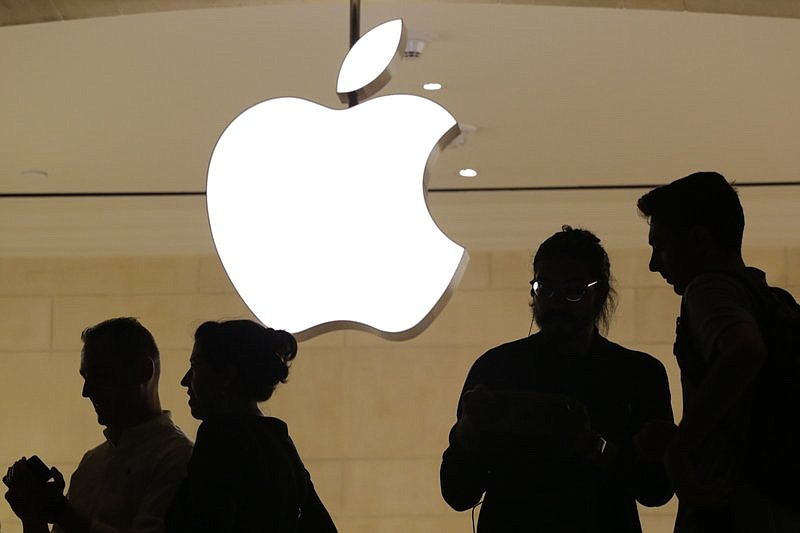There's a growing backlash against the fees Apple Inc. and Google collect from their mobile app stores. This fight over money results in irritations for the rest of us.
Netflix Inc. recently stopped letting new subscribers sign up through the company's iPhone and iPad apps, to avoid handing a cut of subscription revenue to Apple. The Netflix iOS app now has an option to log into an account, or that's it. There are no clues for people who haven't subscribed already. Amazon.com Inc. for years has done the same on its iOS apps for Kindle and Prime Video, and people can't buy Spotify Technology SA music subscriptions directly in the company's iOS apps.
People can go to the relevant Netflix, Amazon or Spotify websites on their iPad or iPhone browsers, or sign up from a personal computer, but only if they know this workaround. I bet many people hunting for Marie Kondo's book on home tidying would see this page in their Kindle iPhone app, search in vain for a buy button, and give up:(1)
The reason for this mess is companies have a binary choice: Give Apple up to 30 percent of each sale or elect not to sell digital goods from their iOS apps. Apple takes a cut of purchases made in iOS apps that use the company's iTunes payments system if people are buying digital items to use in the app.(3) Apple doesn't let developers use other billing systems. It's Apple's way or no in-app purchases.
Of course, people expect to be able to buy things from apps, and that leads to confusion when they can't. It's hard to know who deserves more of the blame-Apple or the other powerful companies trying not to share revenue. Either way, people are trapped in the middle of fights between rich companies protecting their turf and finances.(4) Remember that Amazon says it is "customer obsessed" and Apple repeats a similar message about only caring about what consumers want. And then they deliberately introduce confusion into app transactions.
Technology writer John Gruber recently criticized Apple's rules for not giving Netflix and the like the option to tell "users in plain language how to actually pay" for transactions that go around iOS in-app billing.
Apple's developer guidelines say that apps "may not include buttons, external links, or other calls to action that direct customers to purchasing mechanisms other than in-app purchase." That's presumably why Netflix's iOS app doesn't help newbies trying to buy subscriptions. Spotify's iPhone app tells people they can't pay for subscriptions there, and adds: "We know, it's not ideal."
It's good that Apple makes strong App Store rules so people don't get tricked by scams, but what's happening with Netflix, Spotify and Amazon is annoying for consumers.
It would be useful if the Netflix app could tell people they can buy subscriptions in the iPhone Safari browser. If that happened, though, more developers would most likely stop using Apple's in-app payment system and Apple would lose revenue. The company's share of fees from App Store transactions is by far the largest component of revenue in its services segment, according to Macquarie Research. Investors are betting Apple services can make up for slowing iPhone sales.
Netflix's decision to stop subscription sign-ups in its iOS app is particularly notable. In each of the last two years, smartphone users globally spent more money on Netflix than on any other single mobile app that wasn't a video game, according to figures from the research firm App Annie.(5) Spotify was No. 1 in 2015 and 2016.
Developers have also criticized the similar revenue share that Alphabet Inc.'s Google takes from its Android app store, Google Play. But Google's rules are looser.
On the Android apps for Netflix and Spotify, I can purchase subscriptions by putting in my credit card information just as I would on those companies' websites. I had an iPhone until November and was pleasantly surprised to now be able to buy Kindle books with one click in the Android app using my Amazon account. For Fortnite, the popular video game whose owner has railed against app store fees, Android device users see a message that says the app isn't available on Google Play. (They can go to Fortnite's website and turn off a security setting on Android devices to download the app outside of Google Play.)
Google misses out on revenue because Fornite and Netflix aren't using the company's billing system and handing a chunk of sales to the web search giant. It's not as easy to enter a credit card for Netflix as using a thumb print to make an in-app purchase. But on Android, at least there's less confusion. As Marie Kondo followers would say, that sparks joy.

